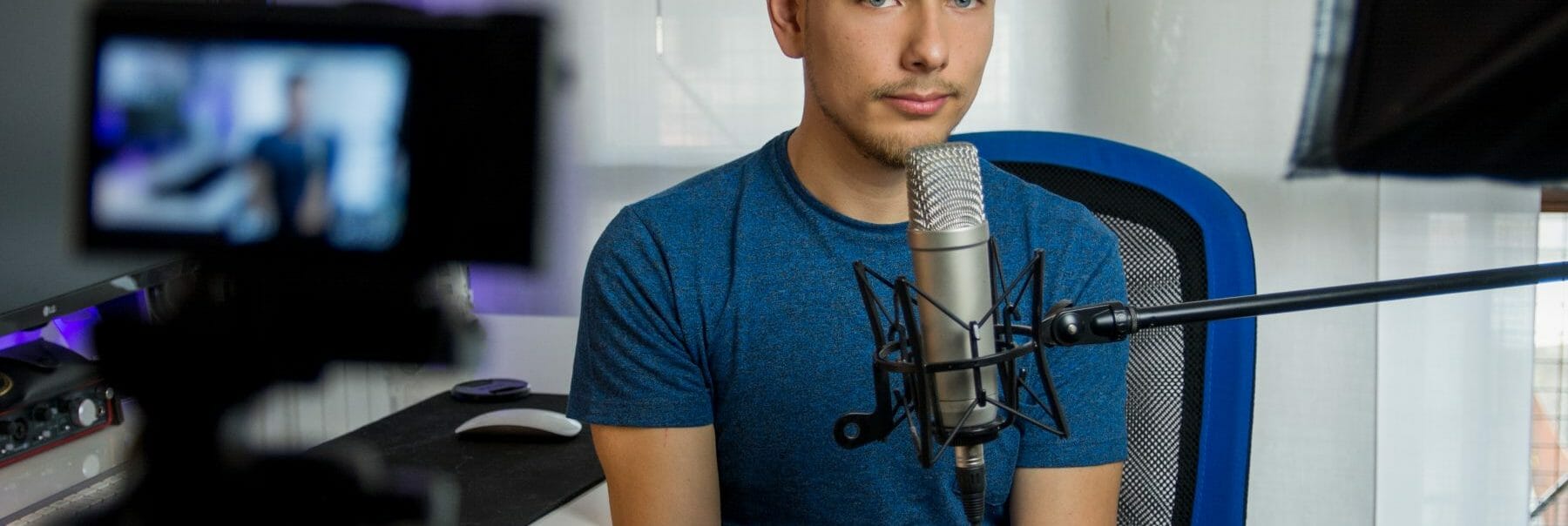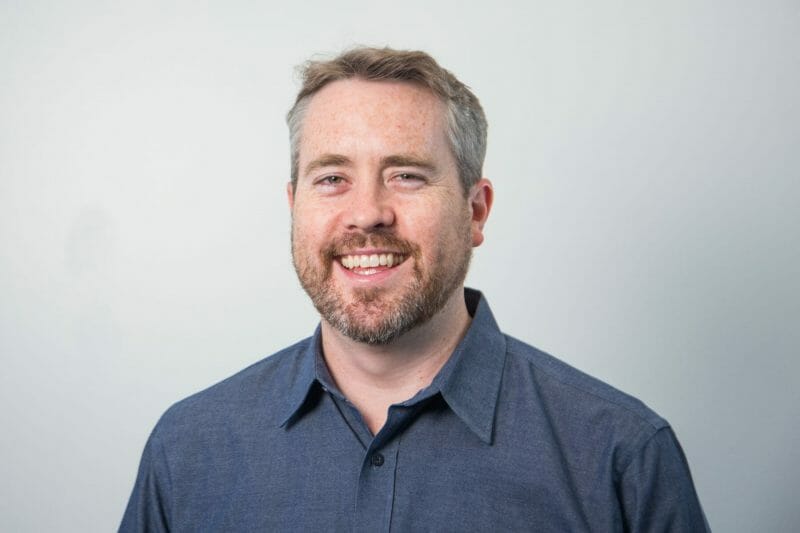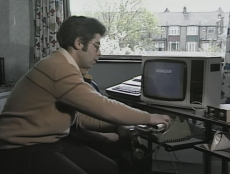
Editor’s Picks
Industry News
Interviews
An Incubator for YouTube Creators? Next 10 Ventures and the Evolving Market of Content Creation
By Henry Kronk
November 26, 2018
Content creation on YouTube is changing. Many YouTubers speak fondly of a time when, to start a successful channel and generate some traffic, you just needed a camera, an internet-connected device, and the ability to put together some interesting and viewable content. In reality, that hasn’t been the case for most creators for years. Many, however, managed to find success in the past decade with little overhead and scant consideration paid to any interest besides that of their viewers. YouTube creators thrived in this ecosystem. They realized the ability to connect with and educate their audience and form a community around their unique knowledge of a niche subject, their engaging and comedic takes, or their willingness to simply be different. And some were able to make a good deal of revenue along the way.
In early 2017, however, YouTube handed significantly more control to advertisers. Suddenly, the platform’s paying customers could decide which YouTube channels they wanted their ads to run against and which they didn’t. This caught many YouTubers unaware. Philip DeFranco, who currently counts over 6 million subscribers, saw his ad revenue initially drop by 80%.
Many others saw less substantial losses. Others still saw gains as advertisers found their content attracted certain target demographics. Ever since, many YouTubers report less freedom in their video creation. If they hope to receive any ad revenue from their work, they need to weigh not only how their videos will play with their audience, but also whether companies advertising on the platform will deem it worthy of their ad dollars. This moment in history has come to be known as the Adpocalypse.
Life After the Adpocalypse
During the fallout of the events described above and even before, a new trend emerged on the platform. Many companies and brands, ad agencies, and investors came to see a huge amount of opportunity in YouTube. The platform currently stands as the world’s second largest search engine. In terms of visits, it’s the third-most popular site. But on top of this, YouTube tends to grab and hold users. According to Alexa rankings, YouTube currently has a bounce rate of around 55%, daily page views per visitor at nearly 5, and an average time spent on the site of nearly 9:00.
Many have mused about investment opportunities in content creation for years. And for years, no one was willing to sign the checks. Hank Green, one of the creators behind Mental Floss and many more, remembers a moment at the 2009 GigaOm-hosted conference NewTeeVee Live:
“One thing I will never forget was a panel of venture capitalists…four rich guys on the stage who were each asked, ‘What, if anything, would you definitely NOT invest in right now?’
Every. Single. One. Said. “Content.”
Things began to turn around in 2016 when YouTube itself, realizing how much hateful, misleading, politically-motivated, and downright nefarious content was going up on its platform, decided to affect the climate with positive change. That year, they launched the Creators for Change initiative, which diverted $1 million in funding to six YouTubers to “[amplify] the voices of role models who are tackling difficult social issues with their channels.”
Funds went primarily to production and equipment. The program grew, and YouTube added more and more ambassadors and funding. Funds were also used increasingly for ‘marketing support.’
In October of this year, the platform announced a further $20 million investment for education-focused creators. Funds were diverted to three areas: content creation, expanded marketing and brand partnerships, and increased tools and resources for ‘EduTubers.’
While these initiatives might be better described as damage control than strategic investments, they mark a moment in which interest outside of viewers and advertisers began to affect change on the platform.
Enter Next 10 Ventures
Also in 2018, YouTube’s former Global Director of Top Creator Partnerships Ben Grubbs left the company to start his own investment fund. By May, he’d secured $50 million in capital, launched Next 10 Ventures, and brought on former Co-Head of Product Development for the Harry Potter franchise Paul Condolora as COO. The fund will act as a creator Incubator.
“At a company like YouTube, you’re focused on a lot of platform-wide goals,” Grubbs told eLearning Inside. “I was interested in focusing more on creator-centric goals and opportunities. What Next 10 Ventures is meant to do is to partner with creators to strengthen what they’re doing, have them find success, and hopefully we’ll be successful as a byproduct.”
Grubbs began his 5 1/2 year tenure at YouTube as a manager of the creator in Asia and later moved back to the U.S. as global director.
“In that space and in education, I found that a lot of creators didn’t want to be dependent on AdSense revenue,” he said. “With many education creators we would find that they had actually disabled their AdSense monetization altogether. They were really not in it for fame and fortune. I think many want to connect with and enrich their audience, but still want to come up with a sustainable way to do what they’re doing. So if it’s not the ad model, what is it?”
Grubbs has a few answers to his own question. He sees a lot of potential in expanding relationships with advertisers, agencies, and brands, while also exploiting the communities YouTubers generate around their channels.
“It can involve more direct deals with brands,” Grubbs said. “It can involve sponsorships or, in some cases, underwriting. If you look at the television market and public broadcasting, there is a history of programming that is underwritten by foundations or private individuals. There are decades of legacy there. As we move into the online space, there has been a lot of conversation about that for years. It hasn’t been super formalized but that’s the stuff that we’re thinking about.”
“We’ve had companies already approach us and express interest in what we’re doing and how to be supportive. Which is great. From our side were going go figure that out. We’re going to see how we can bring people to the table.”
“Another side is folks growing their own community and establishing some kind of brand relationship between themselves and their audience. That opens up all of these direct-to-consumer monetization opportunities. We want to be supportive of that.”

“I would not use a broad brush and say it’s the Adpocalypse for everyone, not all.”
Next 10 Ventures is currently accepting applicants for their incubator program. By the end of the year, they’ll select 25 to 40 YouTubers into their year-long program. The fund, along with YouTube’s own investments, might sound like great news for creators. Unfortunately, the barriers to entry and funding are high.
Just to be considered for YouTubes EduCreator initiative, you need to have to have a minimum of 25,000 subscribers. For Next 10 funding, that figure is 50,000. In addition, you’ll need 750,000 views on one platform.
Simultaneously, the criteria for receiving ad revenue on YouTube have also gone up. In 2017, YouTube raised the minimum amount of views to receive AdSense dollars to 10,000. While they have increased monetization options with new features like channel subscriptions and YouTube Giving, these avenues are only available to YouTubers who already have tens of thousands of subscribers.
While many hold that the shifting YouTube policies tend to hurt the smaller and emerging creators, Grubbs believes that now is a better time than any before to grow on the platform.
“I would not use a broad brush and say it’s the Adpocalypse for everyone, not all,” he said. “There are a lot of categories that are thriving.”
“The opportunity for consumer reach hasn’t been any better than it is today. If you just focus on YouTube, you have a platform that’s reaching 1 billion people every day. You have the opportunity to go in and target that macro view and then serve sub segments. Channels are growing faster, reaching milestones of 100,000, 500,000, 1 million subscribers at a faster rate today than ever before. On an overall basis you have a large audience population on the platform itself.”
The details of the agreement that Next 10 will offer creators is still under wraps. Successful applicants will enter into a revenue sharing agreement with Next 10. They will retain the copyright to their content, and, while Next 10 says they will provide ‘support’ for programming, Grubbs says his fund will not exact any creative control.
Many Boxes at YouTube Remain Un-Checked
Among eligible content creators, Next 10 will be looking for a few different qualities.
“When you talk about educational content, there is a certain amount that’s more academic or classroom content,” Grubbs said. “That’s not necessarily what we’re trying to lean into. We’re not looking at creators who are trying to replace classroom education. Instead, we’re interested in those who are looking to supplement it. So we want content that teachers can bring into the classroom.”
“We’re really trying to lean into what I would call inspirational content. It’s a mix of education and entertainment. We want to bring new learners into new subject matter and expose them to [areas in which] they may not be getting an in-depth perspective in school.”
“From the diversity standpoint, we’re also thinking about how to support women who want to be part of this. On YouTube I think there is a gender imbalance in the creator space. It skews far more male than female. But from an audience space, it isn’t that way.”
“The last piece is geographic diversity. We’re mindful that this population growth online is surging from different areas around the world. We’re looking at how creators can bring supply to these ecosystems where there is already demand.”
“I spent a long time in Asia. The challenge that creators outside the US are all very aware of is how their ad revenue and CPM’s varied market by market. It’s a question of how much ad inventory is in the system, and then when it’s in the system, how is it being targeted? There are certain categories or demographics that advertisers want more than others. If you’re a creator in a market like Thailand and if the content you’re making is in Thai, your audience base is limited to Thailand and to the overseas audience who understand Thai. Your viewership is going to tied to the inflow of advertisements from brands who actually want to go and target a Thai audience base.”
“The size of that market is obviously going to be different from global English or the U.S. English market. In a market like Japan, there is a lot of supply of advertisement in the system and targeted towards Japanese users. Anecdotally, what I found is that YouTube Japanese creators serving a Japanese audience would do incredibly well through AdSense. Whenever I met creators and they asked me ‘What I should know? What I should be mindful of?’ I always told them ‘Japan.’ They have some of the best CPM’s and ad rates in the entire world. The challenge is you have to go and appeal to a Japanese audience.”
“Coming back to the U.S., I think there is good opportunity for creators to appeal to a female audience. I would say females aged 25 to 30 years old. There is actually really good advertiser demand for that audience space.”
Grubbs played a key role at YouTube throughout the various stages of the Adpocalypse in 2017 and 2018. When asked if, with the power of hindsight, he would do anything differently, he says he wished it had all happened sooner.
“The stuff that were doing right now at Next 10 Ventures, I wish I was doing that two or three years ago,” he said. “In some cases, some of what we’re doing now, I was advocating for internally. There are a lot of different priorities within the organization. The impetus for Next 10 has been there for a long time.”
“There is an opportunity for more supply on the platform driving in towards the point around diversity. So we can either just sit back and wait for this to occur and then we’ll see what comes out and lean into that. Or we can say, instead of sitting back and waiting, which will take years, let’s actually take a more proactive view and prod and invest in this early stage in the market. We’re also taking a very long term view of this endeavor. Whoever comes out of this incubator and continues to thrive, we want to keep working with them so they can grow.”
Featured Image: Gianandrea Villa, Unsplash. Grubbs headshot courtesy of Next 10 Ventures.









One Comment